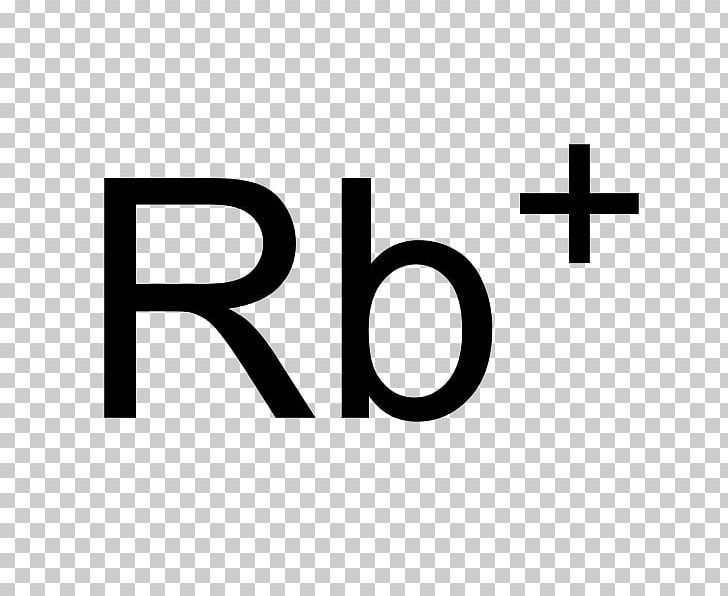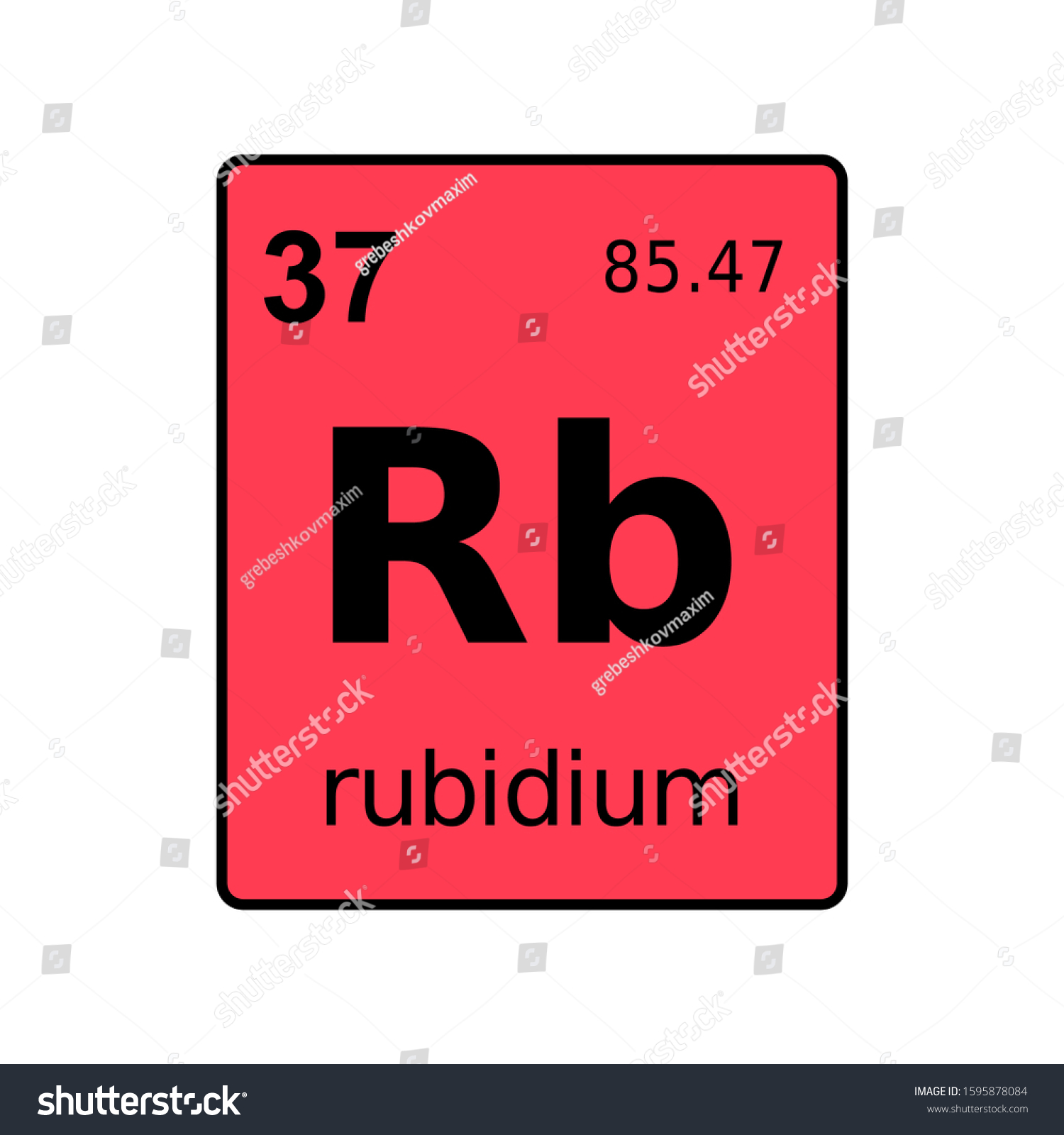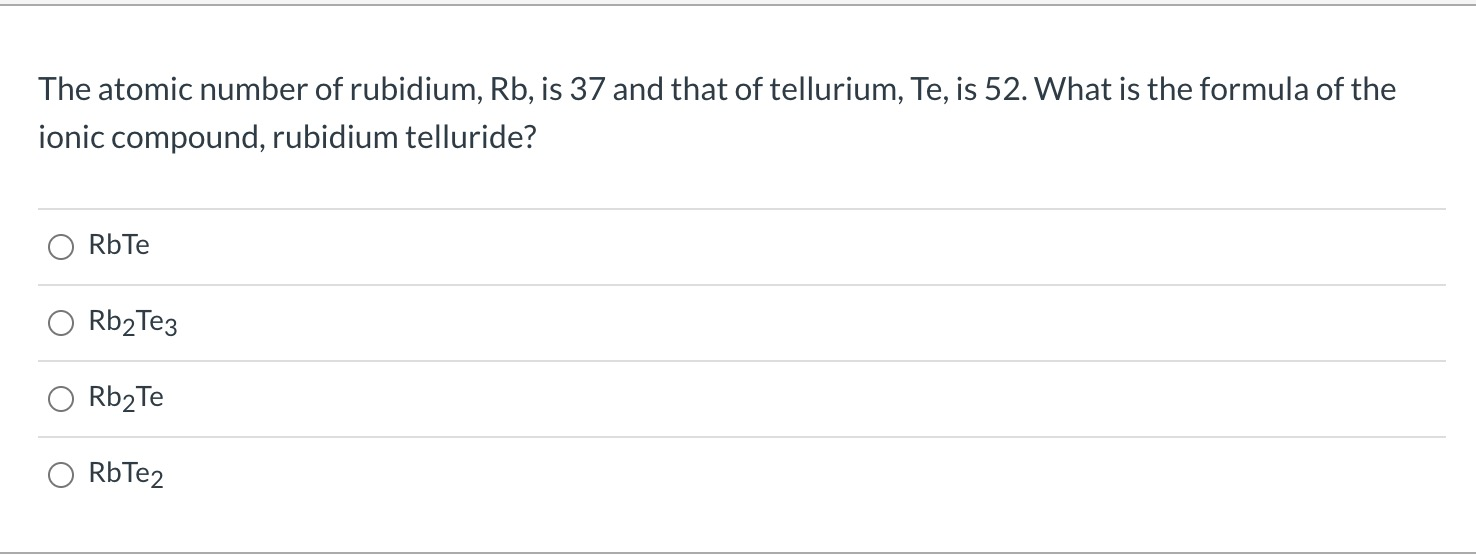| Rubidium is a soft, silvery metal that reacts violently with water (Wikipedia image). |
Rubidium is an element with atomic symbol Rb, atomic number 37, and atomic weight 85.468. Rubidium is a chemical element with atomic number 37 which means there are 37 protons and 37 electrons in the atomic structure. The chemical symbol for Rubidium is Rb. Neutron Number and Mass Number of Rubidium Mass numbers of typical isotopes of Rubidium are 85; 87. Rubidium is a chemical element with atomic number 37 which means there are 37 protons and 37 electrons in the atomic structure. The chemical symbol for Rubidium is Rb. Rubidium is a soft, silvery-white metallic element of the alkali metal group, with an atomic mass of 85.4678. Atomic Symbol Rb Uses Used as a catalyst, photocells, and vacuum and cathode-ray tubes. Atomic Number 37 Learn more about the atomic number. Description Soft, silvery-white, highly reactive metal. Atomic Mass 85,4678 Learn more about the atomic mass. Name Origin Latin: rubidus (deep red); the color its salts impart to flames.
Rubidium
| Atomic Number: | 37 | Atomic Radius: | 303 pm (Van der Waals) |
| Atomic Symbol: | Rb | Melting Point: | 39.3 °C |
| Atomic Weight: | 85.47 | Boiling Point: | 688 °C |
| Electron Configuration: | [Kr]5s1 | Oxidation States: | +1, −1 (a strongly basic oxide) |
History
From the Latin word rubidus, deepest red. Discovered in 1861 by Bunsen and Kirchoff in the mineral lepidolite by use of the spectroscope.
Sources
The element is much more abundant than was thought several years ago. It is now considered to be the 16th most abundant element in the earth's crust. Rubidium occurs in pollucite, leucite, and zinnwaldite, which contains traces up to 1%, in the form of the oxide. It is found in lepidolite to the extent of about 1.5%, and is recovered commercially from this source. Potassium minerals, such as those found at Searles Lake, California, and potassium chloride recovered from the brines in Michigan also contain the element and are commercial sources. It is also found along with cesium in the extensive deposits of pollucite at Bernic Lake, Manitoba.
Properties
Rubidium can be liquid at room temperature. It is a soft, silvery-white metallic element of the alkali group and is the second most electropositive and alkaline element. It ignites spontaneously in air and reacts violently in water, setting fire to the liberated hydrogen. As with other alkali metals, it forms amalgams with mercury and it alloys with gold, cesium, sodium, and potassium. It colors a flame yellowish violet. Rubidium metal can be prepared by reducing rubidium chloride with calcium, and by a number of other methods. It must be kept under a dry mineral oil or in a vacuum or inert atmosphere.
Isotopes
Twenty four isotopes of rubidium are known. Naturally occurring rubidium is made of two isotopes, 85Rb and 87Rb. Rubidium-87 is present to the extent of 27.85% in natural rubidium and is a beta emitter with a half-life of 4.9 x 1010 years. Ordinary rubidium is sufficiently radioactive to expose a photographic film in about 30 to 60 days. Rubidium forms four oxides: Rb2O, Rb2O2, Rb2O3, Rb2O4.
Uses

Atomic Number Of Rubidium And Caesium
Because rubidium can be easily ionized, it has been considered for use in 'ion engines' for space vehicles; however, cesium is somewhat more efficient for this purpose. It is also proposed for use as a working fluid for vapor turbines and for use in a thermoelectric generator using the magnetohydrodynamic principle where rubidium ions are formed by heat at high temperature and passed through a magnetic field. These conduct electricity and act like an amature of a generator thereby generating an electric current. Rubidium is used as a getter in vacuum tubes and as a photocell component. It has been used in making special glasses. RbAg4I5 is important, as it has the highest room conductivity of any known ionic crystal. At 20°C its conductivity is about the same as dilute sulfuric acid. This suggests use in thin film batteries and other applications. Quick gmail account creator.
Rubidium was discovered in 1861. It belongs to the alkali metals group of the periodic table. It is an abundant and highly reactive metal.
History and Discovery
Rubidium was discovered by Gustav Kirchhoff and Robert Bunsen in 1861. They used the technique known as flame spectroscopy to isolate the new element. The name rubidium has been derived from Latin word rubidus, that means deep red. It was given to the element as it emitted bright red lines in its emission spectrum [1]. The radioactivity of rubidium was discovered in 1908. The discoverers of Bose-Einstein condensate in 1995 used rubidium-87 and were awarded the Nobel prize in Physics in 2001 [2].
Rubidium

| Periodic Table Classification | Group 1 Period 5 |
|---|---|
| State at 20C | Solid |
| Color | Grey white |
| Electron Configuration | [Kr] 5s1 |
| Electron Number | 37 |
| Proton Number | 37 |
| Electron Shell | 2, 8, 18, 8, 1 |
| Density | 1.63 g.cm-3 at 20°C |
| Atomic number | 37 |
| Atomic Mass | 85.47 g.mol -1 |
| Electronegativity according to Pauling | 0.82 |
Occurrence
Rubidium is an abundant element and is ranked as the twenty-third most abundant element in the Earth’s crust [3]. In mostly occurs in the form of minerals, including carnallite, leucite, zinnwaldite and pollucite. The commercial production of rubidium is carried out from lepidolite, which contains up to 3.5% of rubidium [4]. Various minerals of potassium and potassium chlorides also contain significant amounts of rubidium. Rubidium is also present in the sea water, with a concentration of 125 µg/L which is much lower as compared to potassium. The largest producers of rubidium which have large deposits of the metal include Canada and Italy [5].
Physical Characteristics
Rubidium is silvery-white metal. It belongs to the alkali metal group of elements and is soft in nature. Rubidium is ductile metal and used for various purposes. It has a melting point of 39.3°C and have a low density, 1.532 g/cm3.
Chemical Characteristics

Rubidium is a very reactive metal. It undergoes rapid oxidation in the presence of air. Rubidium burns with a purplish flame like potassium. It has high electropositive values and is ranked second among the stable alkali metal. Rubidium reacts vigorously with water and can lead to the ignition of hydrogen gas that is produced during the reaction. It also undergoes spontaneous ignition when exposed to air. It forms alloys with iron, gold, sodium and potassium and forms amalgams with mercury. The ionization energy of rubidium is very low, 406 kJ/mol. The most common and widely used compound of rubidium is rubidium chloride (RbCl). There are various oxides of rubidium, and forms superoxide when excess amount of oxygen is present.
Significance and Uses
- Rubidium is widely used in the manufacturing of electronic devices.
- Rubidium is used to make purple colored fireworks.
- It is used to make thermoelectric generators.
- Rubidium is used in making photocells, oscillators and vacuum tubes.
- Rubidium is used in the manufacturing of special type of glass.
- Rubidium-82 is used for medical purposes for the diagnosis of various diseases, such as myocardial perfusion and detection of brain tumors.
Health Effects
Rubidium is a non-toxic metal. Rubidium has no biological role. However, the similarity of charge between rubidium and potassium ions makes it taken up by the cells in similar ways as potassium. Due to its vigorous reaction with water and its ability to spontaneously catch fire, the handling and storage of rubidium is quite challenging. Rubidium can be taken up by cells of the body, but these ions are not poisonous. The biological half-life of rubidium is around 50 days.
Isotopes of Rubidium

There are two naturally occurring isotopes in rubidium, rubidium-85 is the stable and more abundant isotope, while rubidium-87 is the radioactive isotope. Rubidium-87 has a half-life of around 49 billion years and is considered as a primordial nuclide. There are twenty-four artificial radioactive isotopes of rubidium, which have a half-life of less than 90 days [6].
REFERENCES
[1]. Weeks, Mary Elvira (1932). “The discovery of the elements. XIII. Some spectroscopic discoveries”. Journal of Chemical Education. 9 (8): 1413–1434. Bibcode:1932JChEd…9.1413W. doi:10.1021/ed009p1413.
[2]. Levi, Barbara Goss (2001). “Cornell, Ketterle, and Wieman Share Nobel Prize for Bose-Einstein Condensates”. Physics Today. Physics Today online. Canoscan lide 25 driver mac el capitan. 54 (12): 14. Bibcode:2001PhT….54l.14L. doi:10.1063/1.1445529.
[3]. Butterman, William C.; Brooks, William E.; Reese, Jr., Robert G. (2003). “Mineral Commodity Profile: Rubidium” (PDF). United States Geological Survey. Retrieved 2010-12-04
[4].Wise, M. A. (1995). “Trace element chemistry of lithium-rich micas from rare-element granitic pegmatites”. Mineralogy and Petrology. 55 (13): 203–215. Bibcode:1995MinPe.55.203W. doi:10.1007/BF01162588.
Atomic Number Of Rubidium
[5]. Teertstra, David K.; Cerny, Petr; Hawthorne, Frank C.; Pier, Julie; Wang, Lu-Min; Ewing, Rodney C. (1998). “Rubicline, a new feldspar from San Piero in Campo, Elba, Italy”. American Mineralogist. 83 (11–12 Part 1): 1335–1339. Bibcode:1998AmMin.83.1335T. doi:10.2138/am-1998-11-1223.
Atomic Number Of Isotopes Of Rubidium
[6]. Audi, Georges; Bersillon, O.; Blachot, J.; Wapstra, A. H. (2003). “The NUBASE Evaluation of Nuclear and Decay Properties”. Nuclear Physics A. Atomic Mass Data Center. 729 (1): 3–128. Bibcode:2003NuPhA.729….3A. doi:10.1016/j.nuclphysa.2003.11.001.
Other Periodic Table Elements

Atomic Number Rubidium Electrons
- Potassium
Potassium is an alkali metal and was obtained in pure elemental form in 1807 by…
- Tennessine
Tennessine is a synthetic element that was discovered in 2010. It is highly radioactive and…
- Moscovium
Moscovium is a synthetic element that was discovered in 2003. It is a highly radioactive…
